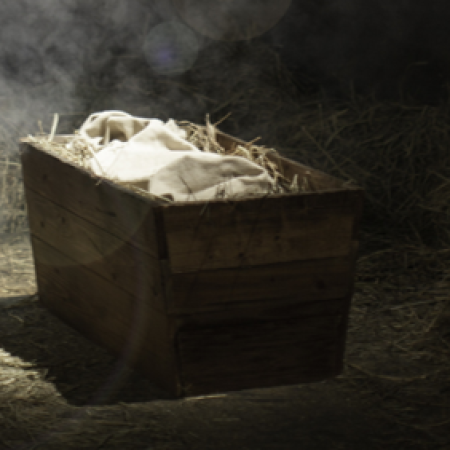
I remember the first dramatic presentation of the nativity I ever saw. It was somewhere in Calcutta, India, I believe, shortly before I, then aged 12, and my family returned to the UK. It had all the usual cast of characters, but the one I remember best was the surly, uncaring inn keeper who rudely turned Joseph and his heavily pregnant wife away.
The problem is, that familiar and common place as that caricature is, it is simply not biblical. There was no inn and there was no innkeeper; at least not according to an accurate reading of Scripture. But then why let the facts get in the way of a good story?
As I repeatedly press home to my students, the meaning of any passage of Scripture is the meaning intended by the original inspired author and as would have been understood by the original readers.
So, how can we work out what the original inspired author intended, and what the original readers would have understood, since they’re all long dead? The answer is that we apply the normal rules of grammar and the facts of history or, as it is technically called, the grammatical – historical approach to interpreting Scripture.
Let’s look, then, at the grammar of the infamous passage in Luke 2:6-7, with most English translations following the example set by the AV’s rendering of, “And while they were there, the time came for her to give birth. And she gave birth to her firstborn son and wrapped him in swaddling cloths and laid him in a manger, because there was no place for them in the inn.”
The critical word here is the word inn, which is the AV’s translation of the Greek word katalyma, and therein lies the problem. Greek has a word for a commercial inn or lodging place, but it’s not katalyma, it’s pandokheion, the word Luke himself uses in chapter 10 in the parable of the Good Samaritan. If he had wanted to use pandokheion here he could easily have done so but, inspired by the Spirit of God, he opts for katalyma which normally refers to a spare room, or even an extra room added to a house to accommodate guests. Interestingly, it’s the word Luke again uses in the account of the Last Supper (Luke 10), where the ESV translates it as guest room.
The International Standard Bible Encyclopaedia defines katalyma as “the spare or upper room in a private house or in a village […] where travelers received hospitality and where no payment was expected”.
I have just checked my parallel translations on Logos and was pleasantly surprised to discover that the NIV and the CSB both break with centuries’ long tradition and accurately translate katalyma as guest room in Luke 2.
So, as far as language is concerned, there’s no question but that Jesus was not born in an inn, nor even in the spare or guest room of a house in Bethlehem, because “there was no room in the katalyma”.
Well, what about the historical and cultural context of this text?
There are two issues here that need clarifying as we try and view the story through the eyes of the original readers of Luke’s account, and not jump to western orientated conclusions.
First, we need to go back to words, and the word under the spotlight now is the word translated as manger. I suspect that when we read that word we immediately envisage a setting on some sort of farm, but certainly not in a domestic setting, but that is precisely where we go wrong. In the world into which Jesus was born, it was commonplace to keep livestock inside the house, This provided security for the animals but also a certain amount of heating for the home, something I have seen on my African travels in such places as Madagascar.
It would have been almost the norm in Bethlehem for most families to live in a single-room house, with a lower compartment for animals to be brought in at night, and either a room at the back for visitors, or space on the roof. Even in the main living area occupied by the family, there would have been hay-filled hollows in the ground for the animals, and it may well have been one of thee and not even a trough type structure in which the infant Christ was laid.
But one more thing we need to note to finally dispel this myth surrounding the nativity. It is simply not credible, given the nature of Eastern hospitality and family ties, that, pregnant or not, Mary and Joseph would not have been given hospitality by a family member, however full the house already was. The idea of them wandering the streets in Joseph’s family town, looking for somewhere to stay is simply untenable.
So let me offer my paraphrase of Luke 2:6-7
“And while they were there, the time came for her to give birth. And she gave birth to her firstborn son and wrapped him in swaddling cloths and laid him in a manger, because there was no space for them in the guest room.”
(I do want to strongly commend to you Kenneth Bailey’s superb book Jesus Through Middle Eastern Eyes which first opened my eyes to this issue.)
